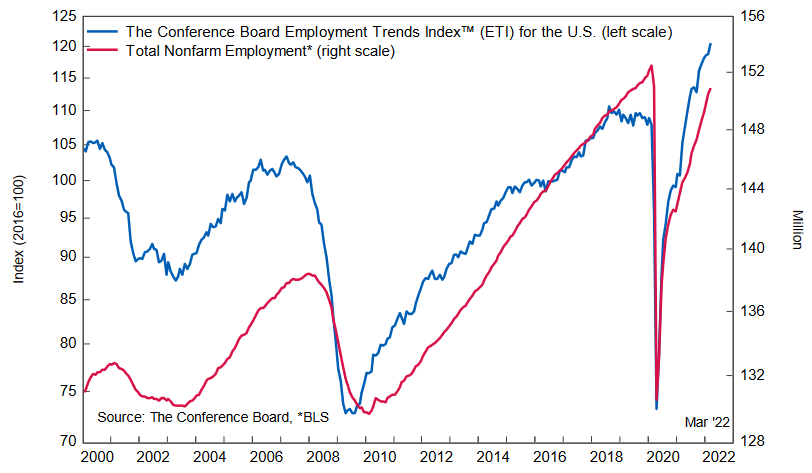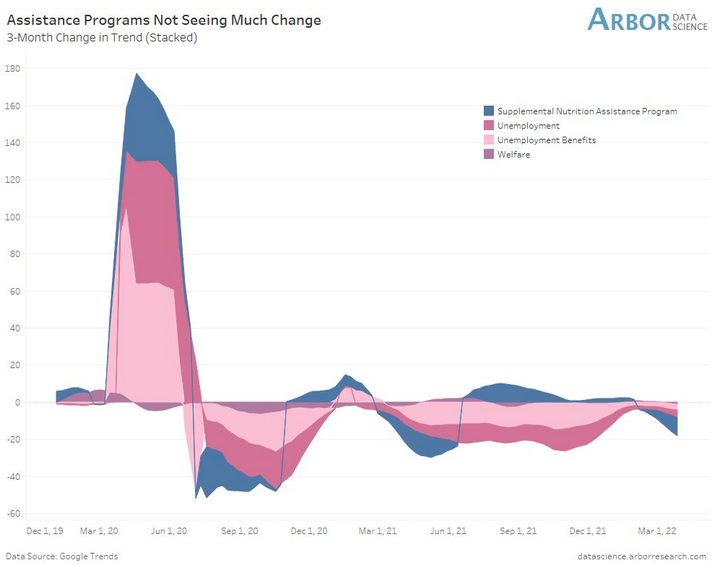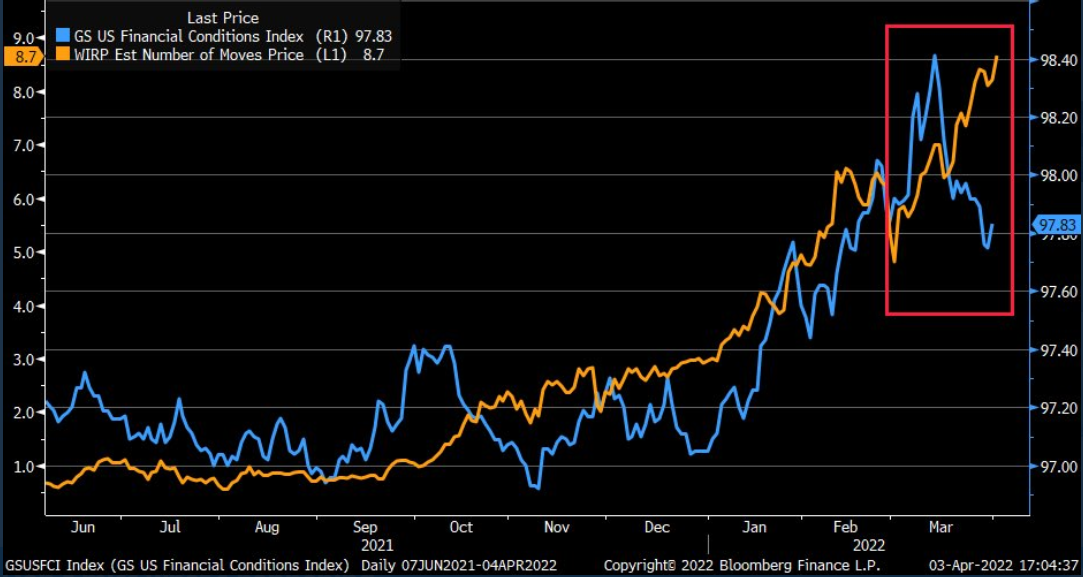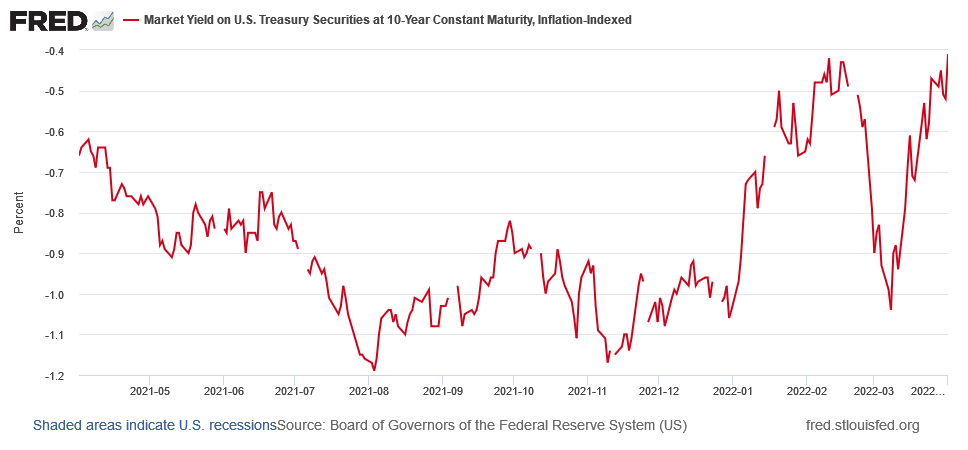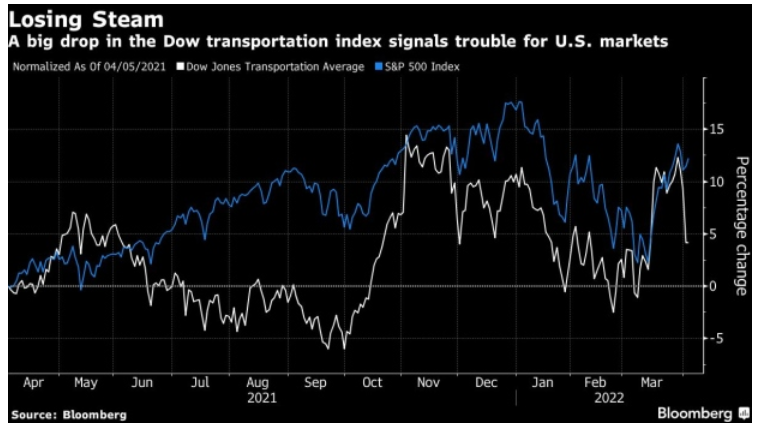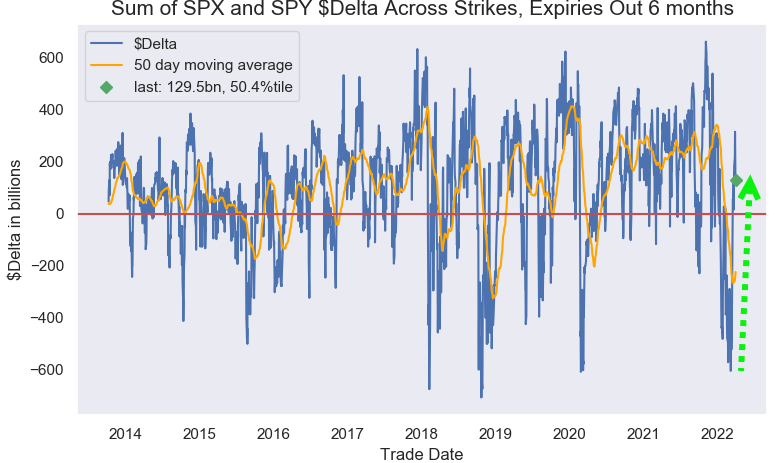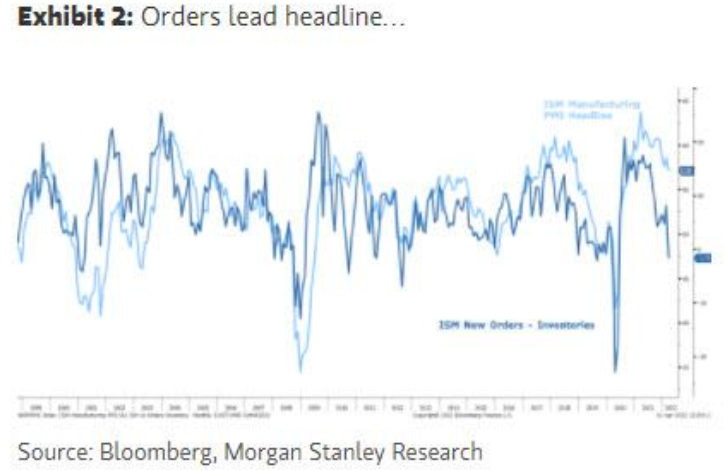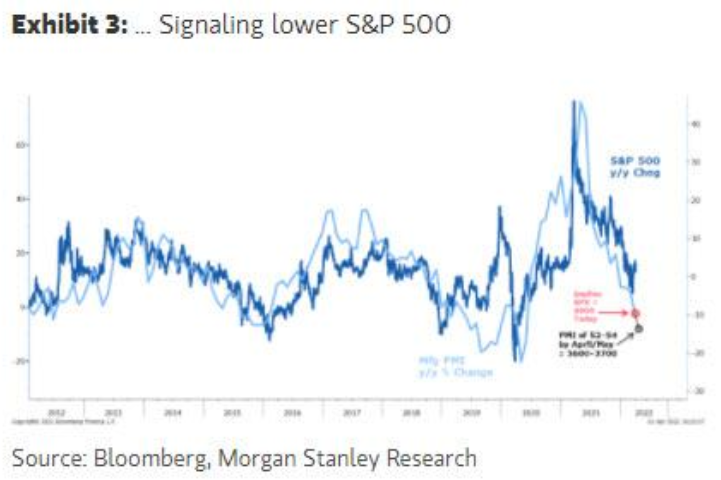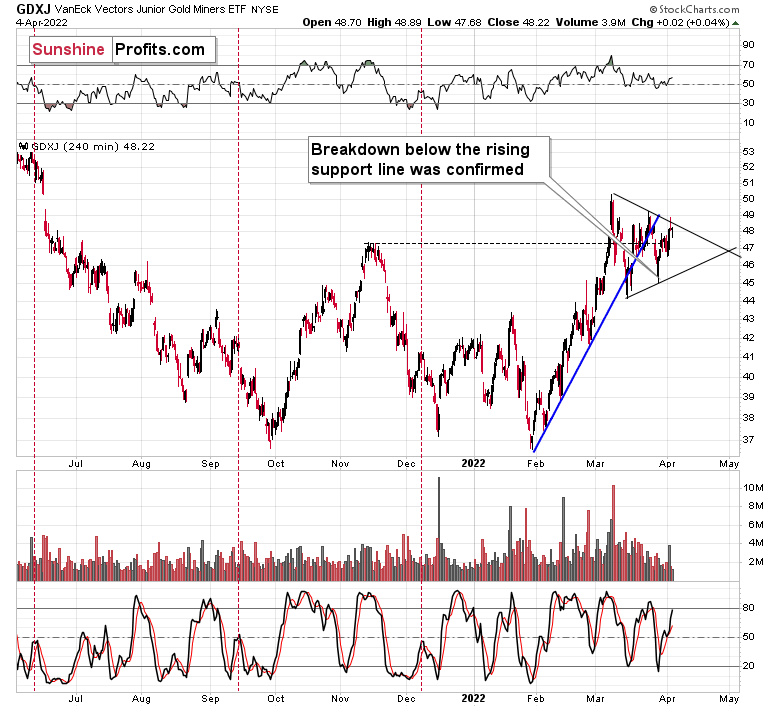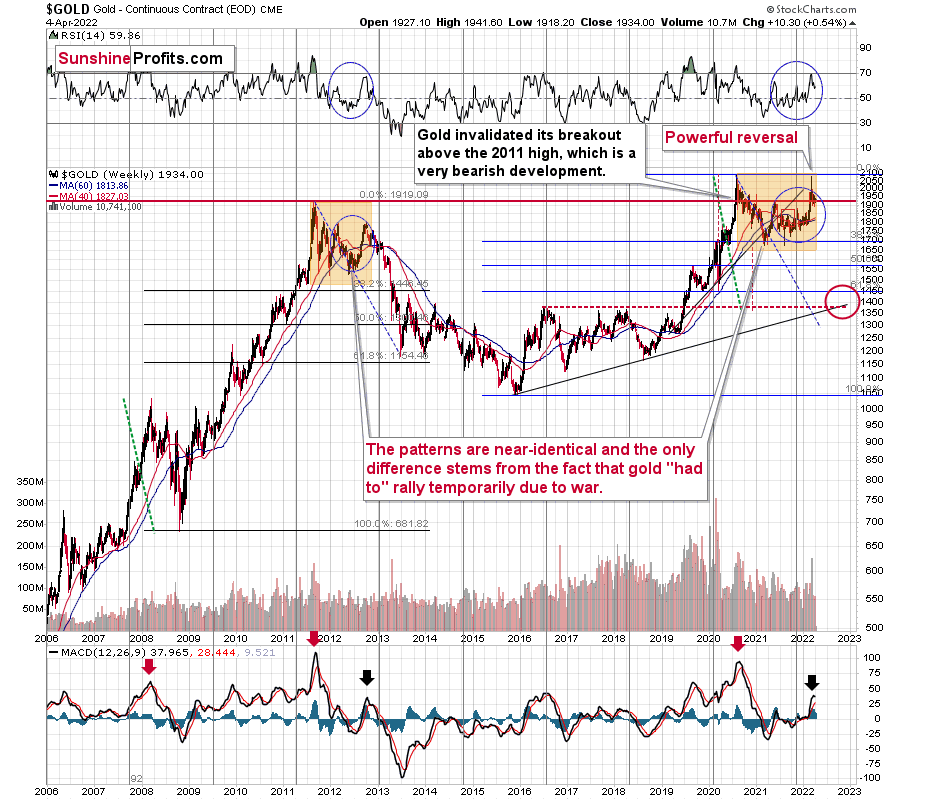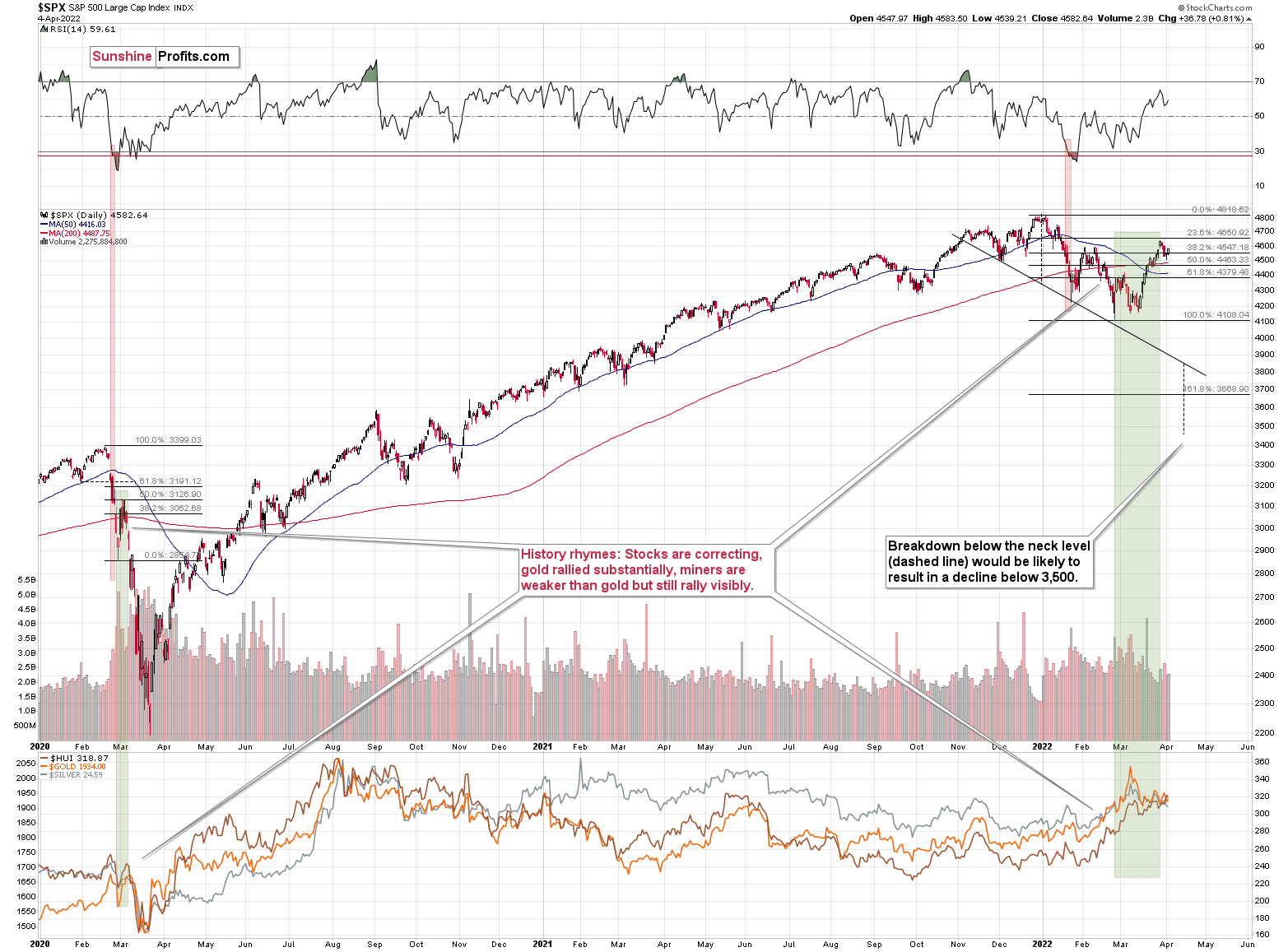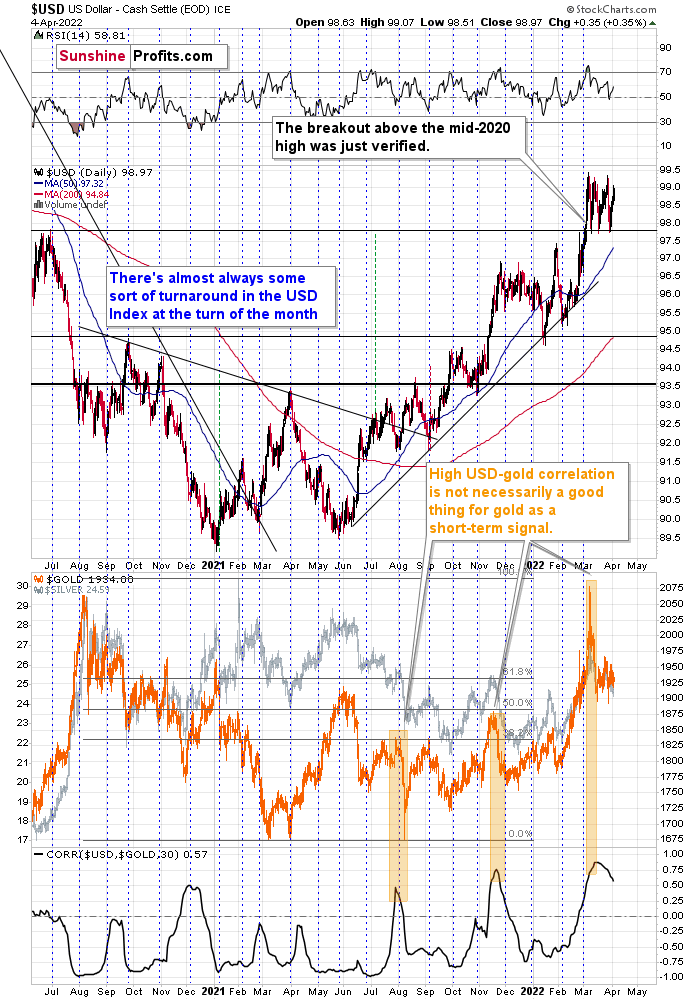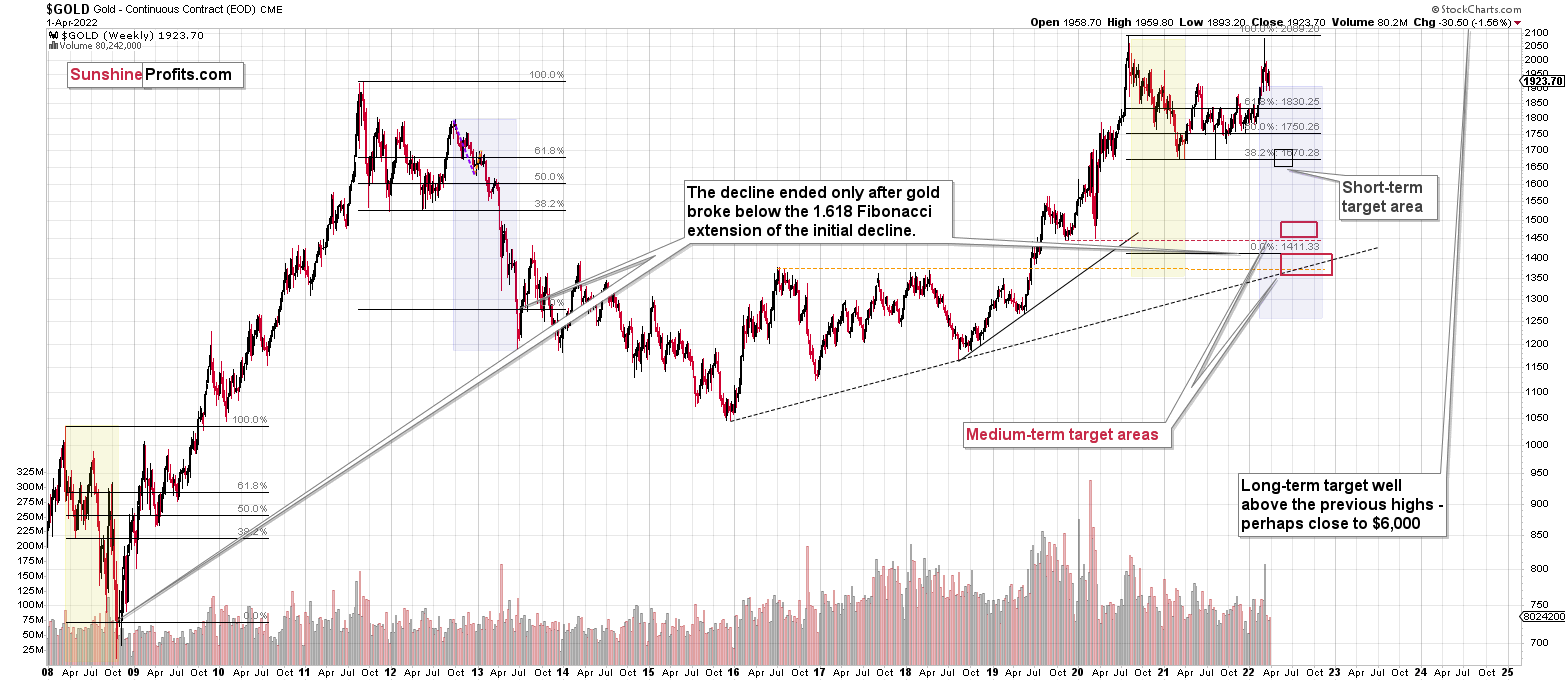Briefly: in our opinion, full (300% of the regular position size) speculative short positions in junior mining stocks are justified from the risk/reward point of view at the moment of publishing this Alert.
During yesterday’s session, price action in the precious metals sector was once again mixed, but this time the relative performance worked in a different way compared to what we had seen on Friday. Gold was up, silver and senior mining stocks were down, and junior mining stocks were flat. That’s in tune with what I wrote previously, so before moving to the technical side of things, let’s take a look at the markets from a more fundamental point of view.
Bear in Mind
It’s all fun and games on Wall Street as the summer 2020 crowd has returned with a vengeance. However, while high beta assets outperform and call option activity remains frenzied, the sun is likely setting for risk-on sentiment.
To explain, good economic data is currently bad news for the financial markets. While investors haven’t quite gotten the memo, the more the U.S. economy outperforms, the more hawkish the Fed will become. As a result, while market participants have embraced the idea that seven to 12 rate hikes don’t matter, their misguided optimism should come under severe pressure over the medium term.
For example, The Conference Board released its Employment Trends Index (ETI) on Apr. 4. Moreover, the index increased from 118.90 in February 2022 (a downward revision) to 120.56 in March. Agron Nicaj, Associate Economist at The Conference Board, said:
“Consistent months of growth in the ETI indicate that employment is growing, and the labor market is expanding. The labor market is continuing to add jobs, especially in in-person services and other industries that have yet to reach pre-pandemic levels of employment. We expect these industries, including accommodation and food services, to experience the greatest job gains in the coming months. We can expect jobs to return to pre-pandemic levels before the end of the year.”
He added:
“Recruitment and retention difficulties remain high, and the unemployment rate is expected to approach 3 percent by the end of the year, indicating severe labor shortages throughout 2022. The labor force participation rate is expected to grow slightly with rising wages potentially luring more workers to the job market, driven by ongoing labor shortages. During this tight labor market, job switchers are especially likely to reap the benefits of wage gains.”
Please see below:
Thus, while I’ve been warning for months that the U.S. economy remains in a healthy position, investors misinterpret where we are in the cycle. For example, while it may seem counterintuitive, a robust U.S. labor market is bearish, not bullish. The reason is that more employment opportunities and hot wage inflation put more pressure on the Fed to raise interest rates. Moreover, the longer it festers and the more it burns, the harder it will be for the Fed to normalize inflation without impairing the U.S. economy.
Think of it like this: when a person gains 10 pounds, losing the weight is a manageable task. However, when a person gains 100 pounds, returning to the prior baseline is much more difficult. As such, the Fed finds itself in category #2. With the U.S. labor market on fire and inflation following its lead, normalizing these metrics without hurting U.S. economic growth is like trying to lose 100 pounds while maintaining the same diet. Thus, tough times likely lie ahead as the Fed’s rate hike cycle accelerates over the medium term.
To that point, with consumers’ cash positions still too large for the financial market’s own good, searches for assistance programs have declined once again.
Please see below:
To explain, the color blocks above track Google searches (source: Google Trends) for keywords related to unemployment and related programs. If you analyze the right side of the chart, you can see that the three-month change has declined in 2022, as plentiful employment opportunities and a fading pandemic result in little need for unemployment benefits. As such, please remember that the Fed needs to reduce employment and wages to calm inflation. Thus, things are not moving in the central bank’s desired direction.
As further evidence, I warned throughout 2021 that a hawkish Fed and tighter financial conditions are bearish for the PMs. While the fundamental expectation worked perfectly before the Russia-Ukraine crisis erupted, the medium-term thesis is clearer now than it was then.
Please see below:
To explain, the orange line above tracks the number of rate hikes priced in by the futures market, while the blue line above tracks Goldman Sachs’ Financial Conditions Index (FCI). If you analyze the movement of the former, futures traders expect roughly nine rate hikes by the Fed in 2022.
However, if you focus your attention on the right side of the chart, you can see that the FCI has declined materially from its highs. Therefore, financial conditions are easier now than they were before the March FOMC meeting. However, the Fed needs to tighten financial conditions to calm inflation. However, since market participants are not listening, Chairman Jerome Powell needs to amplify his hawkish rhetoric until the message hits home.
Think about it: if looser financial conditions are used to stimulate economic growth and inflation, how can the Fed calm the pressures without reversing the situation? Moreover, please remember that the current policy stance contributed to 8%+ annualized inflation. Thus, it’s unrealistic to materially reduce inflation from 8% to 2% without the Fed materially shifting the liquidity dynamics. Therefore, investors’ optimism will likely reverse sharply over the medium term.
To that point, while denial reigns supreme on Wall Street and the PMs have benefited from the short-term splurge, the U.S. 10-Year real yield has recovered all of its Russia-Ukraine losses. Moreover, with higher real yields required to curb inflation, a move from -0.41% (now) to 0% is more likely than not over the medium term.
Please see below:
In addition, while the S&P 500 and the PMs remain uplifted, other areas of the stock market are preparing for what should come.
Please see below:
To explain, the blue line above tracks the S&P 500, while the white line above tracks the Dow Jones Transportation Average (DJT). For context, the latter is comprised of companies in the trucking, railroad, and delivery services sectors.
Moreover, if you analyze the right side of the chart, you can see that the white line has declined materially in recent days while the S&P 500 remains elevated. As a result, with the DJT leveraged to economic growth and the Fed's rate hike cycle poised to cool growth substantially, the behavior of the general stock market doesn't reflect the fundamental outlook that should materialize over the medium term.
Also noteworthy, Bank of America told clients on Apr. 4 that their “model's S&P 500 shorts could be fully covered" and that they “are in the late-stages of a short-cover-rally as the implied vol spike in heavily-shorted names has started to fade."
Moreover, data from Nomura paints a similar portrait.
Please see below:
To explain, the blue line above tracks the dollar Delta of S&P 500 options positions. If you analyze the right side of the chart, you can see that positioning has shifted from negative to positive. As a result, investors are now long and expecting higher prices, so the oversold conditions that confronted the S&P 500 have evaporated.
Finally, the most confident opinion comes from Morgan Stanley's Chief U.S. Equity Strategist, Mike Wilson. For example, he told clients that "the bear market rally is now over" and that the Fed's inflation battle will result in a sharp slowdown of the U.S. economy. For context, he cited:
“i) payback in demand from last year's fiscal stimulus, ii) demand destruction from high prices, iii) food and energy price spikes from the war that serve as a tax, and iv) inventory builds that have now caught up to demand.”
Moreover, I noted that the Institute for Supply Management (ISM)’s Manufacturing PMI showcased resilient growth and inflation. However, with the spread between new orders and inflation decelerating sharply, investors assume that the inventory build will help calm inflation. However, with the spread often leading the headline index, it’s an ominous sign for PMIs in the coming months.
Please see below:
To explain, the light blue line above tracks the ISM’s headline index, while the dark blue line above tracks the spread between new orders and inflation. If you analyze the performance, you can see that they have a tight relationship.
More importantly, though, if you focus your attention on the right side of the chart, you can see that the dark blue line has materially underperformed. As a result, the sharp deceleration should collide with the Fed’s rate hike cycle and result in profound weakness over the medium term.
Furthermore, the ISM’s headline index is highly correlated with the performance of the S&P 500.
Please see below:
To explain, the light blue line above tracks the ISM’s headline index, while the dark blue line above tracks the year-over-year (YoY) percentage change in the S&P 500. Thus, if the headline index declines sharply in the coming months, the S&P 500 will likely follow suit.
The bottom line? While the financial markets remain optimistic for now, the medium term should elicit a material shift in sentiment. Moreover, with the PMs likely to suffer profoundly alongside the S&P 500, the medium-term outlook for gold, silver, and mining stocks remains bearish. As such, while the Fed has sounded the hawkish alarm many times in 2022, the chorus should grow louder in the months ahead.
In conclusion, the PMs were mixed on Apr. 4, despite the S&P 500’s optimism. However, with investors misreading the tea leaves, the Fed will likely ruin the party over the next few months. As a result, while the short term remains uncertain, the medium term looks even more bearish than it did at the end of 2021.
On the technical front, we saw that the junior mining stocks moved higher in the first part of the session, but then declined and ended the day practically unchanged.
Why did junior miners rally initially? Perhaps for technical reasons. They were moving higher in their immediate-term trend, and thus, it might have been necessary for them to reach a resistance level before they could return to their downtrend.
Junior miners just found the resistance in the form of the declining line based on the previous March highs. After a tiny attempt to break above this line, the GDXJ declined and the breakout was invalidated, suggesting that the rally is over.
Now, the above-mentioned resistance line appears to be the upper border of the triangle pattern, which might concern you because triangles are usually a “continuation pattern”. In other words, the move that preceded the triangle is usually the type of move that follows it. The preceding move higher was up, so the following move could be to the upside as well.
However, for this to happen, junior miners would first need to confirm the breakout above the line, and we saw the opposite taking place yesterday – the breakout above the line was invalidated.
If – instead – we see a decline below the lower border of the triangle, the pattern would likely be followed by a decline. Please note that I wrote “usually” and now “always” with regard to the bullish implications of triangles.
If we look beyond the above chart, the bearish case is more justified than the bullish one.
I don’t mean just the extremely bearish situation in gold’s long-term chart, where it’s clear that gold is repeating its 2011-2013 performance, with the recent top being analogous to what we saw in 2012.
If it wasn’t for the Ukraine-war-tension-based rally, gold would have likely topped close to its current levels, which would be a perfect analogy to where it topped in 2012 – close to its preceding medium-term highs.
The fact that the RSI indicator moved lower recently after being close to 70 indicates that the top is already behind us.
If history is about to rhyme (and that’s very probable in my view), gold is likely to decline in a back-and-forth manner before it truly slides without looking back. Basically, that’s what we’ve been seeing recently. The recent consolidation is not a bullish development, but something in perfect tune with the extremely bearish pattern from 2012.
I don’t mean “just” the above, because we see similar analogies in silver and gold stocks (the HUI Index), and we get other indications (of more short-term nature) from the USD Index and the general stock market.
The technical picture of the S&P 500 index suggests that the final top and the initial corrective upswing are over.
The general stock market closed the week below its February highs, which means that the small breakout above them was invalidated. This is a very bearish indication for the following weeks. Many more investors are likely to become aware of the new interest-rate-hike-driven medium-term bear market once the S&P 500 breaks to new 2022 lows. That’s when the decline is likely to accelerate, quite likely also in silver and mining stocks that are usually most vulnerable to stock market moves.
Moreover, let’s keep in mind that the USD Index is likely to soar once again soon, triggering declines in the precious metals market.
In my previous analyses, I commented on the USD Index in the following way:
If we focus on the USD Index alone, we’ll see that yesterday’s decline was absolutely inconsequential with regard to changing the outlook for the USDX. It simply continues to consolidate after a breakout above the mid-2020 highs. Breakout + consolidation = increasing chances of rallies’ continuation. A big wave up in the USD Index is likely just around the corner, and the precious metal sector is likely to decline when it materializes.
As the war-based premiums in gold and the USD appear to be waning, a high-interest-rate-driven rally in the USD is likely to trigger declines in gold. The correlation between these two assets has started to decline. When that happened during the last two cases (marked with orange), gold plummeted profoundly shortly thereafter.
The USD Index rallied recently, once again clearly verifying the breakout above its mid-2020 high. This means that the USD Index is now likely ready to rally once again. Naturally, this has bearish implications for the precious metals sector.
All in all, technicals favor a decline in the precious metals sector sooner rather than later.
Overview of the Upcoming Part of the Decline
- It seems to me that the corrective upswing is now over or very close to being over , and that gold, silver, and mining stocks are now likely to continue their medium-term decline.
- It seems that the first (bigger) stop for gold will be close to its previous 2021 lows, slightly below $1,800 . Then it will likely correct a bit, but it’s unclear if I want to exit or reverse the current short position based on that – it depends on the number and the nature of the bullish indications that we get at that time.
- After the above-mentioned correction, we’re likely to see a powerful slide, perhaps close to the 2020 low ($1,450 - $1,500).
- If we see a situation where miners slide in a meaningful and volatile way while silver doesn’t (it just declines moderately), I plan to – once again – switch from short positions in miners to short positions in silver. At this time, it’s too early to say at what price levels this could take place, and if we get this kind of opportunity at all – perhaps with gold close to $1,600.
- I plan to exit all remaining short positions once gold shows substantial strength relative to the USD Index while the latter is still rallying. This may be the case with gold close to $1,350 - $1,400. I expect silver to fall the hardest in the final part of the move. This moment (when gold performs very strongly against the rallying USD and miners are strong relative to gold after its substantial decline) is likely to be the best entry point for long-term investments, in my view. This can also happen with gold close to $1,375, but at the moment it’s too early to say with certainty.
- As a confirmation for the above, I will use the (upcoming or perhaps we have already seen it?) top in the general stock market as the starting point for the three-month countdown. The reason is that after the 1929 top, gold miners declined for about three months after the general stock market started to slide. We also saw some confirmations of this theory based on the analogy to 2008. All in all, the precious metals sector is likely to bottom about three months after the general stock market tops.
- The above is based on the information available today, and it might change in the following days/weeks.
You will find my general overview of the outlook for gold on the chart below:
Please note that the above timing details are relatively broad and “for general overview only” – so that you know more or less what I think and how volatile I think the moves are likely to be – on an approximate basis. These time targets are not binding or clear enough for me to think that they should be used for purchasing options, warrants or similar instruments.
Summary
Summing up, despite the recent rally in gold, the outlook for junior mining stocks remains exactly as I described previously.
Crude oil’s extreme outperformance, the stock market’s weakness, and critical medium-term resistance levels reached by gold (all-time high!) and junior mining stocks, all indicate that the tops are at hand or have just formed.
Investing and trading are difficult. If it was easy, most people would be making money – and they’re not. Right now, it’s most difficult to ignore the urge to “run for cover” if you physically don’t have to. The markets move on “buy the rumor and sell the fact.” This repeats over and over again in many (all?) markets, and we have direct analogies to similar situations in gold itself. Junior miners are likely to decline the most, also based on the massive declines that are likely to take place (in fact, they have already started) in the stock markets.
From the medium-term point of view, the two key long-term factors remain the analogy to 2013 in gold and the broad head and shoulders pattern in the HUI Index. They both suggest much lower prices ahead.
It seems that our profits from short positions are going to become truly epic in the coming months.
After the sell-off (that takes gold to about $1,350-$1,500), I expect the precious metals to rally significantly. The final part of the decline might take as little as 1-5 weeks, so it's important to stay alert to any changes.
As always, we'll keep you - our subscribers - informed.
To summarize:
Trading capital (supplementary part of the portfolio; our opinion): Full speculative short positions (300% of the full position) in junior mining stocks are justified from the risk to reward point of view with the following binding exit profit-take price levels:
Mining stocks (price levels for the GDXJ ETF): binding profit-take exit price: $34.63; stop-loss: none (the volatility is too big to justify a stop-loss order in case of this particular trade)
Alternatively, if one seeks leverage, we’re providing the binding profit-take levels for the JDST (2x leveraged) and GDXD (3x leveraged – which is not suggested for most traders/investors due to the significant leverage). The binding profit-take level for the JDST: $14.98; stop-loss for the JDST: none (the volatility is too big to justify a SL order in case of this particular trade); binding profit-take level for the GDXD: $25.48; stop-loss for the GDXD: none (the volatility is too big to justify a SL order in case of this particular trade).
For-your-information targets (our opinion; we continue to think that mining stocks are the preferred way of taking advantage of the upcoming price move, but if for whatever reason one wants / has to use silver or gold for this trade, we are providing the details anyway.):
Silver futures downside profit-take exit price: $19.12
SLV profit-take exit price: $17.72
ZSL profit-take exit price: $38.28
Gold futures downside profit-take exit price: $1,683
HGD.TO – alternative (Canadian) inverse 2x leveraged gold stocks ETF – the upside profit-take exit price: $11.79
HZD.TO – alternative (Canadian) inverse 2x leveraged silver ETF – the upside profit-take exit price: $29.48
Long-term capital (core part of the portfolio; our opinion): No positions (in other words: cash
Insurance capital (core part of the portfolio; our opinion): Full position
Whether you already subscribed or not, we encourage you to find out how to make the most of our alerts and read our replies to the most common alert-and-gold-trading-related-questions.
Please note that we describe the situation for the day that the alert is posted in the trading section. In other words, if we are writing about a speculative position, it means that it is up-to-date on the day it was posted. We are also featuring the initial target prices to decide whether keeping a position on a given day is in tune with your approach (some moves are too small for medium-term traders, and some might appear too big for day-traders).
Additionally, you might want to read why our stop-loss orders are usually relatively far from the current price.
Please note that a full position doesn't mean using all of the capital for a given trade. You will find details on our thoughts on gold portfolio structuring in the Key Insights section on our website.
As a reminder - "initial target price" means exactly that - an "initial" one. It's not a price level at which we suggest closing positions. If this becomes the case (like it did in the previous trade), we will refer to these levels as levels of exit orders (exactly as we've done previously). Stop-loss levels, however, are naturally not "initial", but something that, in our opinion, might be entered as an order.
Since it is impossible to synchronize target prices and stop-loss levels for all the ETFs and ETNs with the main markets that we provide these levels for (gold, silver and mining stocks - the GDX ETF), the stop-loss levels and target prices for other ETNs and ETF (among other: UGL, GLL, AGQ, ZSL, NUGT, DUST, JNUG, JDST) are provided as supplementary, and not as "final". This means that if a stop-loss or a target level is reached for any of the "additional instruments" (GLL for instance), but not for the "main instrument" (gold in this case), we will view positions in both gold and GLL as still open and the stop-loss for GLL would have to be moved lower. On the other hand, if gold moves to a stop-loss level but GLL doesn't, then we will view both positions (in gold and GLL) as closed. In other words, since it's not possible to be 100% certain that each related instrument moves to a given level when the underlying instrument does, we can't provide levels that would be binding. The levels that we do provide are our best estimate of the levels that will correspond to the levels in the underlying assets, but it will be the underlying assets that one will need to focus on regarding the signs pointing to closing a given position or keeping it open. We might adjust the levels in the "additional instruments" without adjusting the levels in the "main instruments", which will simply mean that we have improved our estimation of these levels, not that we changed our outlook on the markets. We are already working on a tool that would update these levels daily for the most popular ETFs, ETNs and individual mining stocks.
Our preferred ways to invest in and to trade gold along with the reasoning can be found in the how to buy gold section. Furthermore, our preferred ETFs and ETNs can be found in our Gold & Silver ETF Ranking.
As a reminder, Gold & Silver Trading Alerts are posted before or on each trading day (we usually post them before the opening bell, but we don't promise doing that each day). If there's anything urgent, we will send you an additional small alert before posting the main one.
Thank you.
Przemyslaw Radomski, CFA
Founder, Editor-in-chief


